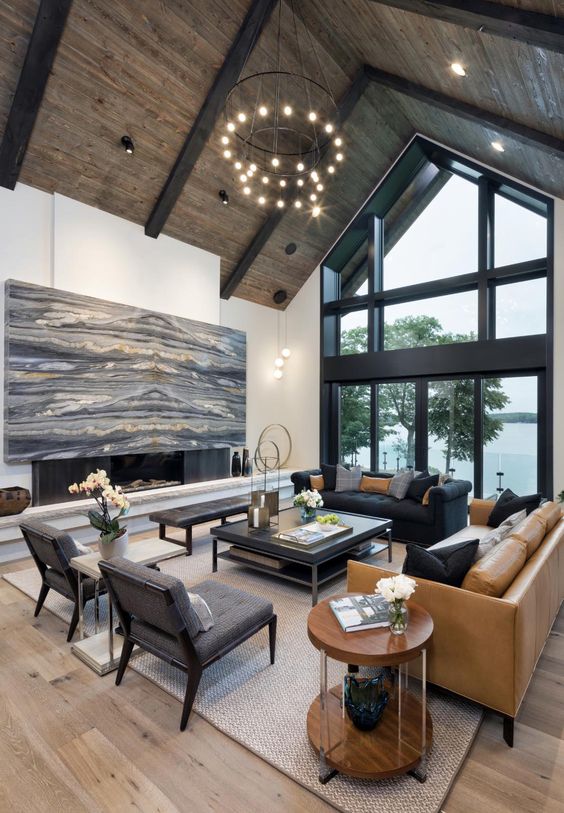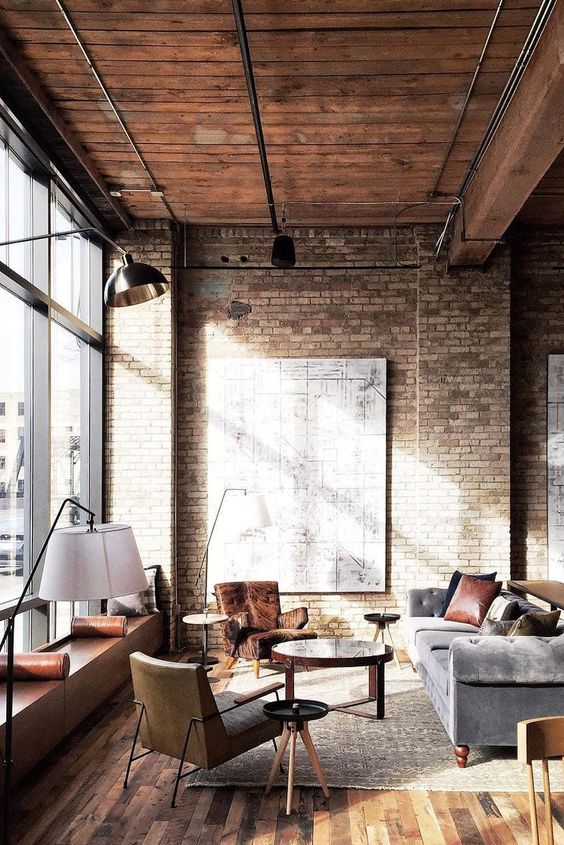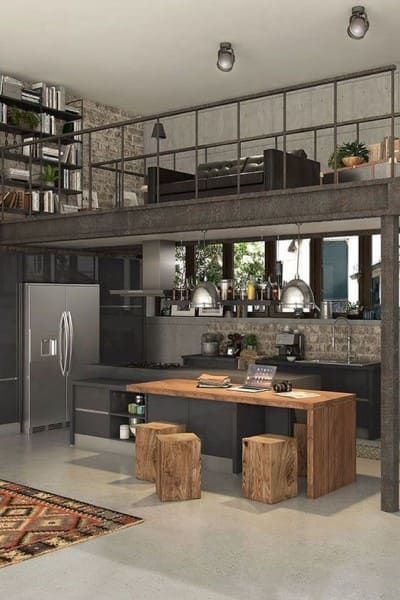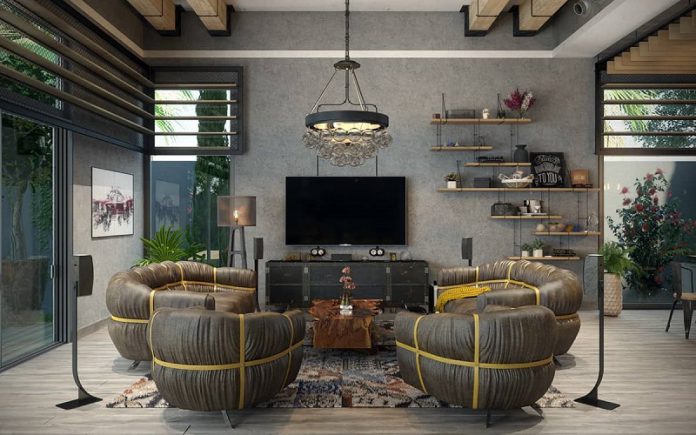Erlanggablog.com – Today’s industrial living rooms have evolved to more technologically advanced settings. The layout even goes beyond the simple architecture consider of brick or concrete walls and open floor-to-ceiling windows. There are so very many different ways to add industrial interior design concepts to your working space! Here is a look at some industrial design strategies that can be used in your new modern living room.
The Best Way to Incorporate Industrial Design Concepts
The best way to incorporate industrial design concepts in a home setting is to start with a blank wall. What would you like to accomplish? For instance, industrial designers can create the illusion of a long office hall, complete with metal file cabinets above and stainless steel doors on each side of large, single-row cabinets. Or, create the illusion of endless, open space by hanging a fabric wall art panel from the ceiling or installing a retractable steel ceiling mount TV bracket. These are just a few examples of how you can pull industrial styling into your home setting.
Most homes have exposed ductwork and plumbing, but if you would like to incorporate industrial living room styling, you want to take a look at the exposed duct work and exposed plumbing in the basement. You might decide to use heavy-duty plastic sheet metal for these areas as well as a stainless steel finish. This type of industrial setting is best suited for large metal wall art that is visible from all sides of this exposed duct work and plumbing area. The industrial living room decorating scheme would then be completed with exposed ceiling wiring, exposed flooring and exposed ductwork and plumbing.

An industrial living room is also not complete without a “labor” palette. This term refers to the colors, textures, shapes and materials that are used in the industrial setting. This palette will be determined by your industry as well as what specific tasks are performed in these workspaces. If you work in a woodworking factory, you will most likely use a dark gray, deep forest green and earthy brown in your palette. If you made steel parts, you would probably choose a rustic red, an olive green or a creamy white.
Industrial Living Room Design Tips
Another industrial living room design tip is to incorporate a bold industrial design. This design tip focuses on using bright colors such as orange, red and yellow as well as earth tones like earth green and gray. Using these color palettes make the industrial setting very open and spacious. If you would like, you can even use white and black or combinations of these colors to create a very sleek, ultra modern look.

If you have exposed brick walls in your industrial-style living room, then adding dark gray, exposed brick walls covered with white washed cement should do the trick. A white or gray exposed brick wall with exposed wiring will give you a cool, casual feel as well as keeping you light and illuminated. For additional added design elements, you can add glass coffee tables and exposed metal knobs on the cabinets. In order to maximize the light source in this room, I would recommend adding recessed lights or sconces over the lighting fixtures.
Add Exposed Concrete Floor to Industrial Theme
Finally, adding exposed concrete floors to your industrial theme will really set off the color scheme and add depth to the space. Concrete floors are usually a solid dark color. I would suggest making sure that you have the floor paint properly installed before you install your industrial theme lighting fixtures. You don’t want to confuse a concrete floor with epoxy paint. Epoxy paints tend to have a white pigment on them and an epoxy floor is not a solid color, so it should be avoided.

Installing your lighting should be done in sections so you can get a good look at all of the different materials. When doing so, be sure that you balance the different materials against one another so they don’t become unbalanced. The goal is to create a unique industrial living room that is not only functional but also attractive. If you follow these simple tips, you will soon be able to create a design that provides plenty of light, but doesn’t take away from the other features of your home.







